First place in the 2018 KfW Construction Awards: An old convent becomes a modern residential project in Cologne.
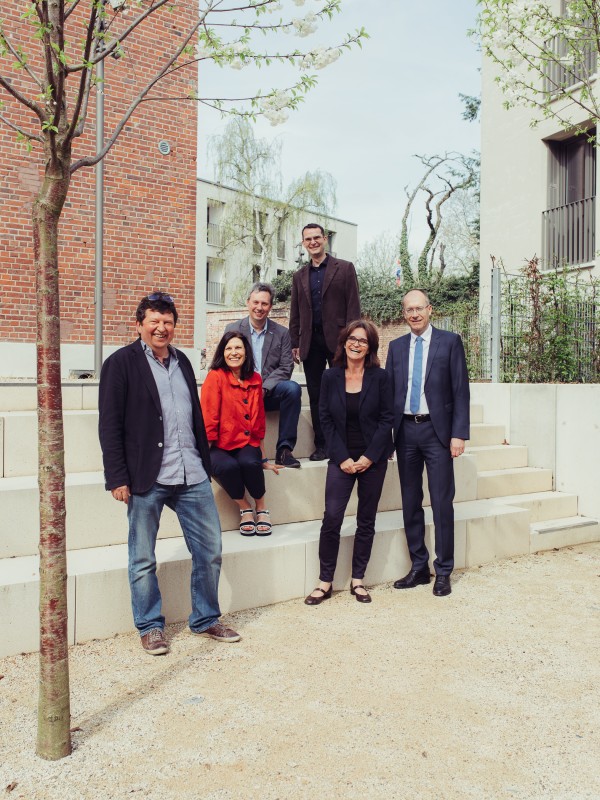
Happy builders
Architects and representatives of developers present themselves as a team.
In fun-loving Cologne, hardly anyone has managed to live in isolation quite like the Order of the Poor Clares did. When a novice was accepted into the Order, she would pass through a monastery gate in the city’s Kalk district and enter a different world altogether: a walled-off place, with hardly any contact with the outside world. During their church’s services, the nuns looked out from a side wing and could only see the altar, not the congregation in the public part of the hall. Even after dying, they remained here; specifically, at a small private cemetery where Sister Regina was the first to be buried after the monastery was founded in 1918 and Sister Maria was the last, having died in 2012 at the age of 90.
Today, openness and internationalism are hallmarks of the once tranquil place. Instead of selling the plot after the monastery came to an end, the Archdiocese transformed it into a social space. Long-time locals and refugees live here in smart but inexpensive flats, while the site also hosts supervised youth quarters, Caritas charity offices, and opportunities for Kalk – a post-industrial part of Cologne that continues to have a somewhat gritty feel. The closed complex has turned into an inviting small neighbourhood which still clearly shows signs of its past.
Good neighbourly relations
How the ancient monastery became a place where different people of all ages and backgrounds live together (KfW Group/n-tv). This video is only available in German.
“You will find a broad cross-section of the population here,” says Peter Thein, a project manager in the Archdiocese’s construction department, adding that “families, shared student flats, pensioners, and refugees are all represented.” Forty-three low-cost residential units have been built, along with offices, and an education and community centre for refugees maintained by the Catholic relief organisation Caritas. The square at the front on lively Kapellenstrasse, which tapers off further down the road, is a meeting place and a draw for visitors. Over to its left, there is a fairly unobtrusive but handsomely designed office and apartment building. “The new building deliberately takes a step back,” explains Regine Leipertz, who designed the project along with her partner Martin Kostulski.
After all, right across the square stands the centuries-old monastery church, which still provides worship services, among many other things. The brick Baroque Revival building from the 1920s gives something of a defiantly solemn impression from the outside, making its bright and spacious nave inside all the more surprising. And its central space is particularly remarkable: a group of chairs and tables with room for 20 people beneath an oval-shaped panel suspended from the ceiling. Curtains hang down from this panel all the way to the floor, completely enveloping the area. “They provide such great seclusion that there could be hustle and bustle all around and you would still be able to have a quiet discussion inside,” says Leipertz, the architect.
Read more under the image gallery.
Inviting
The front yard facing the street has a smaller new building and church.
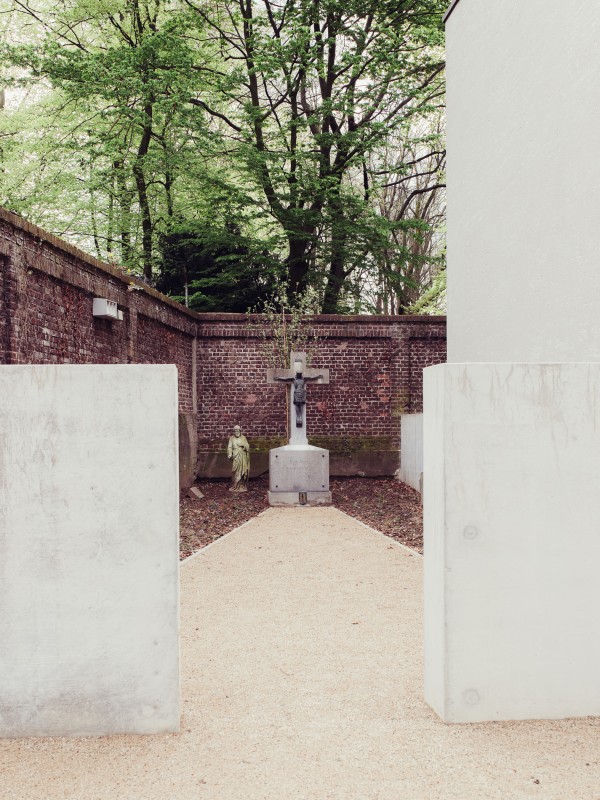
Historic place
In the 20th century, nuns lived secluded lives in the Clarissan convent.
Another major feature in the nave is the movable wall between the main section of the room and the choir area along with the altar. On this side, there are a few seats recessed into the moving wall. “This makes it possible to hold modest services in front of the altar, such as baptisms or the smallest-scale weddings,” explains project manager Peter Thein. Even when the church and its new facilities are used as a centre for people to meet and talk, it still serves as a house of God.
In the monastery’s former gatehouse, ten small apartments have been created in order to care for sick and traumatised refugees, respecting Pope Francis’ calls for “empty convents [to be] there for refugees.” The rectangular Quadrum, the nuns’ former accommodation building, houses two flat-sharing communities for young people. These are inhabited by 14- to 18-year-olds with family or mental health problems, in addition to refugees who came to Germany unaccompanied as minors. They are looked after by employees of Die Gute Hand Foundation.
The young people enjoy more spacious conditions than the nuns who came before them. While a nun usually only had one cell measuring about eight square metres, each young person is given two of these mini-rooms put together; one with a bed, the other with a desk and cupboard. As ever, the courtyard of the Quadrum is tranquil. “There used to be a fountain in the middle, though it had fallen into disuse and unfortunately did not survive the building works,” Peter Thein recalls. “But we are going to put a new one in here,” the project manager adds.
Behind it, barely visible from the street, stands the larger of the site’s two new buildings: a horseshoe-shaped structure with 24 flats in what was once the monastery’s garden. These have two to five rooms and manageable rents for households on low incomes. This building, too, has a reserved outward appearance, but has been designed in a careful, user-friendly, and efficient way. According Kostulski, the architect, the construction was “affordable, but not done on the cheap”. One example of how the three-storey building has been kept affordable is through having only one lift, although this and the exterior corridors still provide wheelchair access to all the flats.
The covered balconies are another feature that goes beyond the bare essentials while remaining inexpensive. Each apartment has a balcony, and these were soon custom-equipped by their residents, some with wicker chairs, others with corner benches, carpets, or toys. The interior walls of the horseshoe-shaped building arc around a communal garden with a playground, while a small slope on the open side offers a place to sit on broad steps. The residents, with their different origins, ages, and lifestyles, freely mix here. “Meeting one another is the best way to achieve understanding and integration,” Peter Thein states. In Kalk, the project met with the otherwise rare agreement of all parties across the spectrum from left to right.
Christians, Muslims, atheists, and others live here peacefully side by side. And the relaxed cosmopolitanism is underscored by traces of the cloistered world of old, which are visible everywhere in the form of Stations of the Cross (on the preserved walls on three sides of the site), a prayer grotto, and grilles left over on individual monastery windows. Additionally, the graves can still be found in the quietest corner of the complex, overlooked by a magnificent copper beech once planted by the nuns, which brings colour and shade to the garden to this day.
The project at a glance
Source
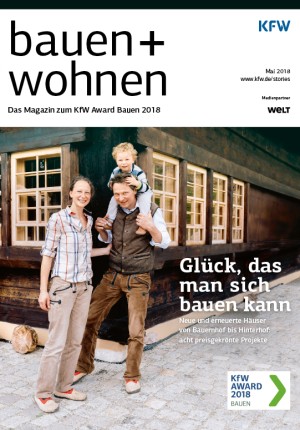
This article has been published in the bauen + wohnen magazine 2018.
To German editionProject: flats, community facilities, and offices in a former monastery.
Location: Kapellenstrasse 45-53, Cologne, Germany
Year of construction: 1924/2017
Owner: Archdiocese of Cologne
Architects: LK Architekten, Cologne
Plot size: 5,692m²
Residences, shared living units, and apartments: 43
Structural construction costs per m²: EUR 1,662
Benefits for residents: affordable living in a beautiful assortment of old and new buildings with an abundance of open space
Benefits for society: opportunities for the district and people in need, monastery preserved, opened up into the neighbourhood
Energy conservation: cogeneration unit, local district heating, insulation, car sharing on site
Universal accessibility: outdoor grounds, apartments can be accessed and used by wheelchair users
Published on KfW Stories: Friday, 18 May 2018
The described project contributes to the following United Nationsʼ Sustainable Development Goals
Goal 7: Ensure access to affordable, reliable, sustainable and modern energy
Close to 80 per cent of the energy produced worldwide still comes from fossil fuel sources. Burning fossil fuels also generates costs for the health system due to air pollution and costs for climate-related damages that harm the general public, not just those burning the fuel.

All United Nations member states adopted the 2030 Agenda in 2015. At its heart is a list of 17 goals for sustainable development, known as the Sustainable Development Goals (SDGs). Our world should become a place where people are able to live in peace with each other in ways that are ecologically compatible, socially just, and economically effective.

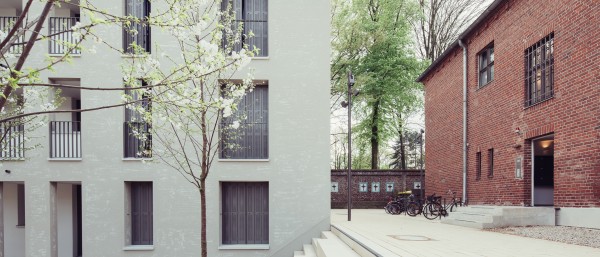

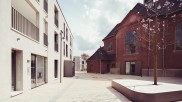
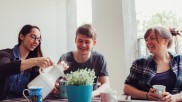
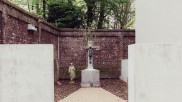
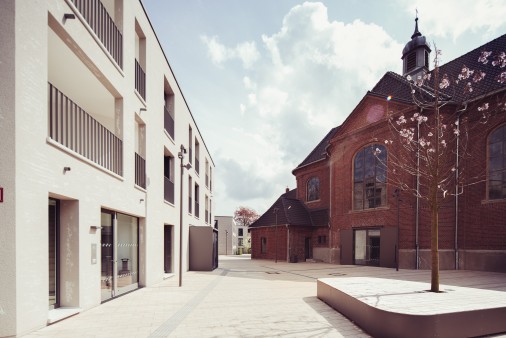
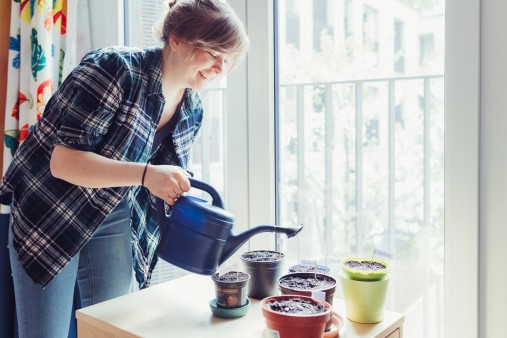
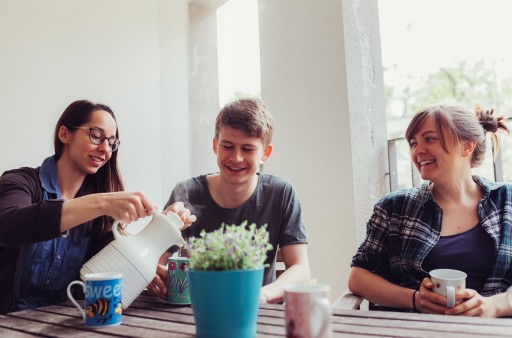
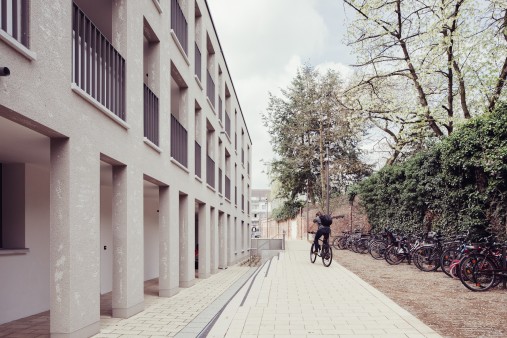




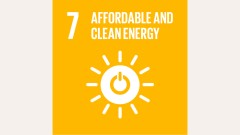
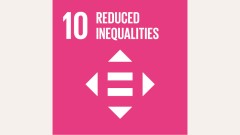
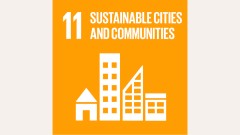
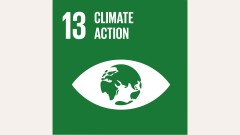
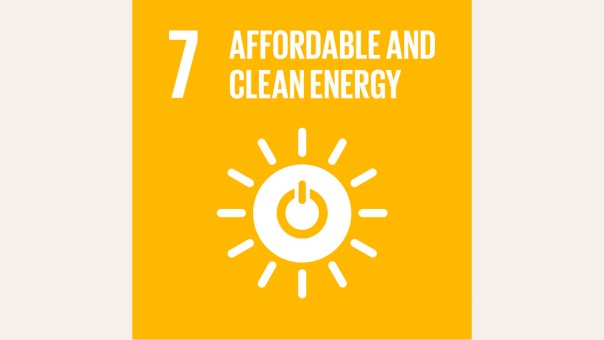
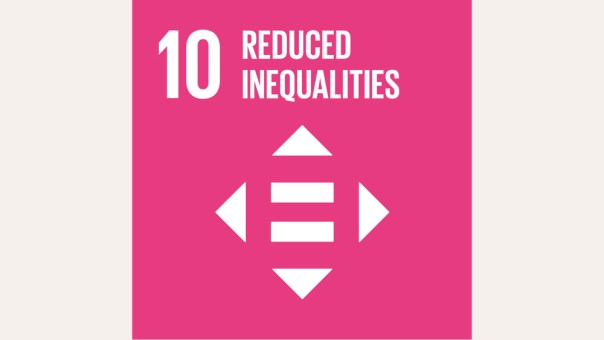
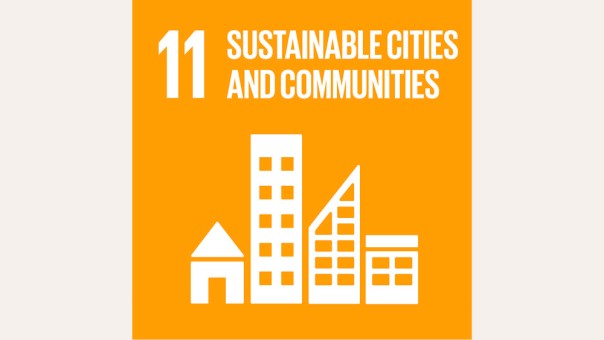
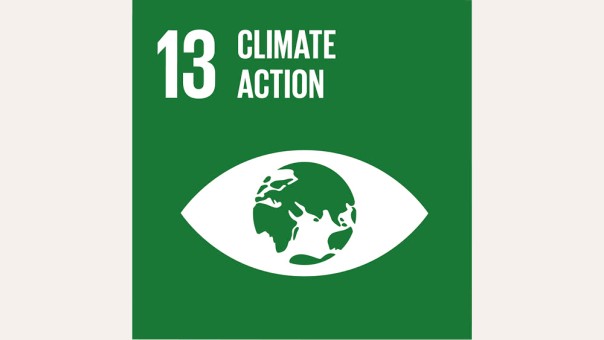
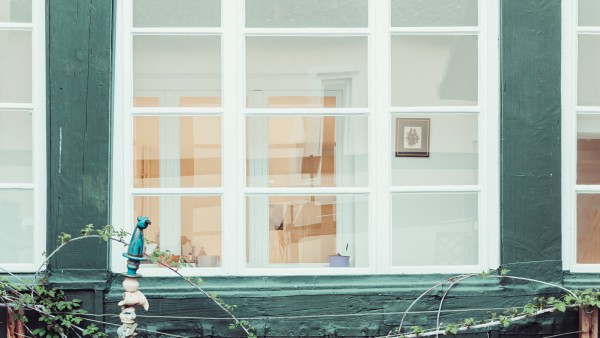
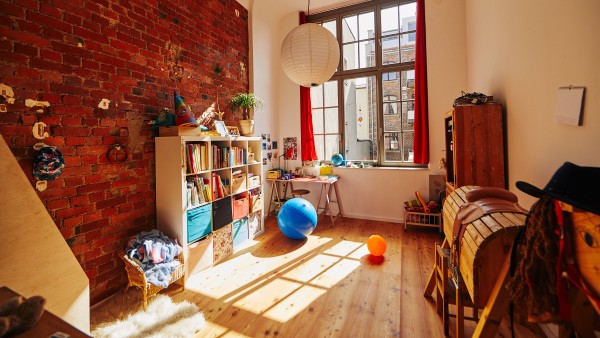
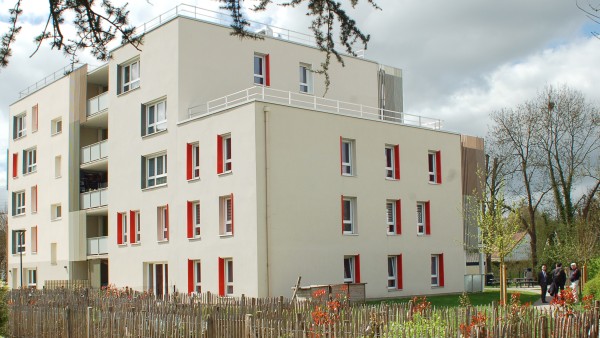
Data protection principles
If you click on one of the following icons, your data will be sent to the corresponding social network.
Privacy information